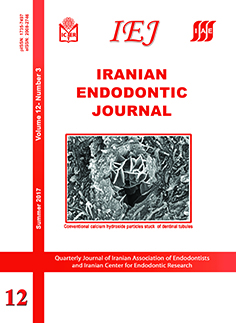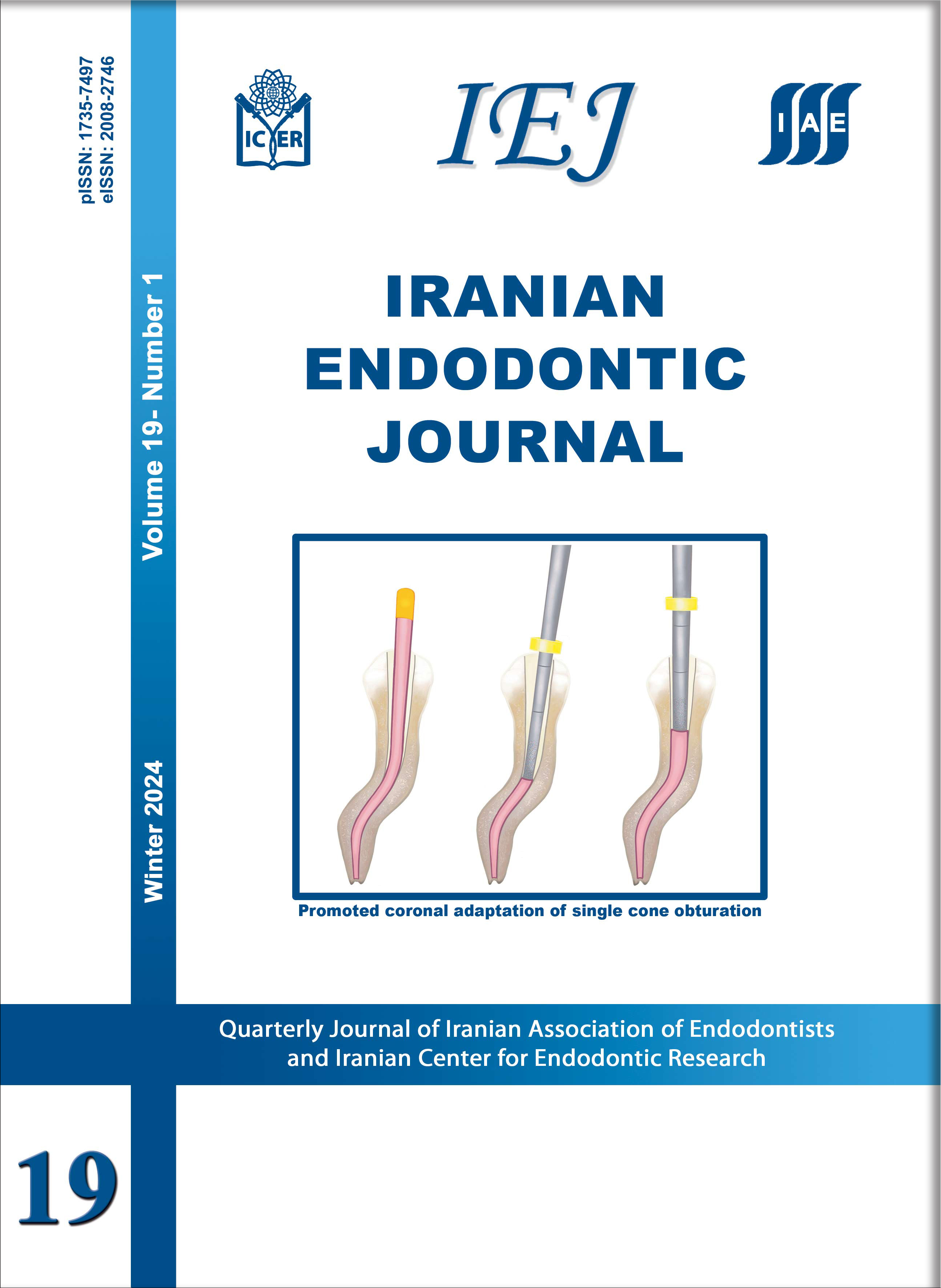Apical Microleakage in Root Canals Containing Broken Rotary Instruments
Iranian Endodontic Journal,
Vol. 12 No. 3 (2017),
2 Tir 2017
,
Page 360-365
https://doi.org/10.22037/iej.v12i3.16656
Abstract
Introduction: Broken instruments in root canals complicate routine endodontic treatment. This study aimed to compare apical microleakage in root canals containing broken rotary instruments filled with mineral trioxide aggregate (MTA), calcium-enriched mixture (CEM) cement, laterally compacted gutta-percha and injected gutta-percha. Methods and Materials: In this in vitro, experimental study, 80 extracted human premolars were decoronated and then the roots were randomly divided into four groups (n=20). Root canals were instrumented with Mtwo rotary files. The files were scratched 3 mm from the tip by a high speed handpiece and they were intentionally broken in the apical third of the canals. The middle and coronal thirds of the canals were then filled with MTA, CEM cement, gutta-percha with lateral compaction technique and injected gutta-percha. Apical microleakage was measured using dye penetration method. Data were analyzed using ANOVA and Tukey’s test. Results: Root canals filled with CEM cement showed the lowest and those filled with injected gutta-percha showed the highest microleakage according to dye penetration depth. No significant difference was noted between the microleakage of CEM cement and MTA or between lateral compaction of gutta-percha and injected gutta-percha (P>0.05). However, CEM cement and MTA groups had significantly lower microleakage than laterally compacted and injected gutta-percha groups (P<0.05). Conclusion: Due to their superior sealing ability, MTA and CEM cement are suitable for filling of root canals containing a broken instrument compared to laterally compacted and injected gutta-percha.
Keywords: Broken Instrument; Calcium-Enriched Mixture; Gutta-Percha; Leakage; Mineral Trioxide Aggregate; Root Canal Filling Materials
How to Cite
- Abstract Viewed: 565 times
- PDF Downloaded: 631 times




